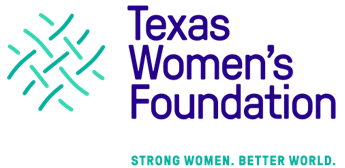Via: Chronicle of Philanthropy
By: Emily Haynes
The Texas Women’s Foundation will now invest all of its financial assets — roughly $43.9 million — in companies and social enterprises that promote the well-being of women and girls.
After eight years of planning, the foundation announced last week that it has overhauled its investment strategy for its endowments, operating investments, and donor-advised funds. While other foundations have pledged to invest large sums of their endowments in mission-related investments, leaders at the Texas Women’s Foundation say it is the first women’s foundation to adopt this gender-focused strategy for the full scope of its financial assets.
“We expect to make more money because we are doing this,” said Roslyn Dawson Thompson, president of the foundation.
The move has already caught the eye of two longtime donors: Lisa Simmons and Serena Simmons Connelly contributed $10.5 million to a new donor-advised fund with the foundation in recognition of its commitment to impact investing. “We think more will follow,” Dawson Thompson said. The foundation plans to keep current DAF holders updated on financial returns through quarterly presentations on the investment portfolio’s financial health and social impact.
Years of Planning
Dawson Thompson, along with the chair of her board, starting digging into the idea after completing a strategic plan in 2012, but it took eight years for the foundation to fully overhaul its investment strategy.
The foundation’s investment advisory committee, made up of board members and volunteers with backgrounds in finance, was initially hesitant to embrace the concept. “The thinking at the time was, well, this is a risky play,” she said.
In 2012, the foundation endowed a new committee with $750,000 to invest in local efforts, including women-owned businesses and loan funds for women entrepreneurs. The committee monitored these investments, angling for a 2 percent return as well as measurably positive outcomes for women and girls in North Texas.
In 2015, buoyed by returns from its local foray into impact investing, the foundation made investments in an equity fund and a bond fund focused on women and girls. With that step, the foundation had moved 22 percent — roughly $6 million — of its financial assets into impact investments.
Last year, the foundation’s financial committees agreed that the “gender-lens investments,” as they are often called, were paying off. At the same time, Dawson Thompson said, impact investing was becoming more common at foundations. These two developments gave the Texas Women’s Foundation the confidence to move the rest of its financial assets into gender-lens investments.
Overlapping Challenges
Rather than solely invest in efforts that explicitly address gender justice, the foundation is taking a holistic approach to improving the lives of women and girls in North Texas and beyond. Its portfolio, for example, includes efforts to promote affordable housing and combat climate change, two challenges Dawson Thompson says have been shown to overwhelmingly impact women and girls.
The foundation used the United Nation’s Sustainable Development Goals to guide the investments in its new portfolio, which is managed by Graystone Consulting, a branch of Morgan Stanley. Members of the foundation’s investment advisory committee collaborated with the financial firm to design the portfolio, which Dawson Thompson said was intended “to be fully diversified so that we were not overly, crazily weighted in any particular area.”
This approach aims to address the causes of overlapping challenges women face. The concept is gaining popularity. Individuals, foundations, and businesses can take many inroads to promoting gender equity through their investment portfolio, said Cathy Clark, faculty director of the Center for the Advancement of Social Entrepreneurship at Duke University’s Fuqua School of Business. For example, a foundation could invest in women-led businesses or services or products for women and girls.
Clark said more of these investment opportunities are coming. “I don’t think we’re at a point where the growth is stable yet; I think it’s still exponential,” she said.
But this approach wasn’t always in vogue. For a long time, lack of data held investors back from taking a leap like the Texas Women’s Foundation, said Ellen Remmer, senior partner at the Philanthropic Initiative, a consultancy that advises philanthropies, businesses, and individuals on their giving. Remmer said skeptical financial officers wondered, “How can you prove to me that this isn’t too risky?”
Many foundations remain skeptical, but Clark said research is starting to offer proof that this strategy yields good financial returns. “There’s research showing that if you have more than two women on a board of directors for a public company, that company outperforms other companies,” she said. Research that has found greater returns from these investments is helping to change people’s attitude toward gender-lens investing from skepticism to enthusiasm. “For a lot of investors, it’s a little bit of a double win,” Clark said.
Dawson Thompson said she hopes that women’s foundations, in particular, take note of this move. Their bold decision, she said, can encourage other women’s foundations to “move beyond a sense of scarcity to a sense of opportunity and not think that doing something relating to gender is fraught with risk but rather is fraught with power.”






